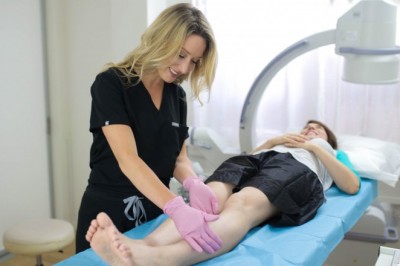views

The School Nurse Shortage
Historically, the shortage of school nurses has received less attention than other issues plaguing the United States educational system. Nurses should be an integral part of any educational organization's school-based health services — especially given that 1 in 4 students has a chronic illness (such as asthma or diabetes).
According to the National Association of School Nurses, 25% of schools express that they do not have the funds to employ a nurse, while 35% only employ part-time nurses. The Centers for Disease Control recommend that schools have one nurse for every 750 students; however, only about 40% of school districts in the United States actually meet this recommendation. Many districts have only one full-time nurse and they often have to share them with other campuses, because there simply are not enough for each school building within a district.
This national shortage of school nurses means that schools often have to ask staff — who, more often than not, don't have medical training — to do tasks such as dispensing students’ medication, managing allergies and asthma, and even handling medical emergencies.
There are currently no federal laws that regulate school nurse staffing. The American Academy of Pediatrics recommends that there be one nurse per school. This is standard that most districts nationwide are failing to meet. School administrators often blame shrinking budgets for the shortfall. Schools without nurses are thus improperly equipped to address the social, emotional, and behavioral effects of the on-going pandemic.
The Critical Role of Nurses in Schools
While many of us are hyper-focused on preventing the spread of COVID-19, the issues that policymakers addressed through school health mandates (passed prior to the coronavirus pandemic) are not going away. In fact, the pandemic most likely exacerbated issues that were negatively affecting students. Emerging studies suggest that childhood obesity rates may be rising as a result of pandemic lockdowns, and many fear that the adverse mental health effects of the pandemic will lead to an increase in suicide rates.
Nurses in schools don't only provide direct care to students. They often:
- Provide basic medical and health training for staff.
- Consult with school and district leaders on important health issues.
- Educate students, their families, and staff on how to stay safe and healthy.
- Perform essential IEP, IFSP, and case management services for students with serious health concerns.
As many schools across the US are beginning to return to in-person instruction, school nurses will now face the challenge of handling additional responsibilities:
- Checking student temperatures.
- Distributing masks.
- Ensuring that students and staff are following sanitation and social distancing guidelines.
- Contact tracing and coronavirus (COVID-19) testing.
Where Do We Go from Here?
The biggest challenge compounding the school nurse shortage is in funding school nurses, not in finding them — although school nurses do have high turnover rates due to their lower than typical wages and the stress of their responsibilities. When questioned, most school administrators state that cost is the foremost reason behind why a school doesn't have a full-time nurse on staff. While there is an ethical argument that every student should have access to a qualified nurse on hand, school administrators say that there is often no funding available. Many school and district leaders have to weigh the risk that a student might have a severe medical emergency against budget concerns.
The tragic trend that we've seen for public schools in the US is that they have been consistently underfunded, and are continuously asked to do more with less.
The harsh reality is that the only way to truly overcome the shortages facing our school system and to meet school nurse staffing standards is to resolve the national educational funding crisis. In an effort to aid some schools' efforts, certain states have introduced legislation that grants funding for school nurses, which can be utilized to purchase school nurse software, which reduces the stress of them. Hopefully initiatives such as these will catch on and are passed in other states. Another potential source of financial assistance comes from the expansion of the Free Care Act, which has increased the number of services for which schools can bill Medicaid to include nursing services (beyond students with IEPs).












